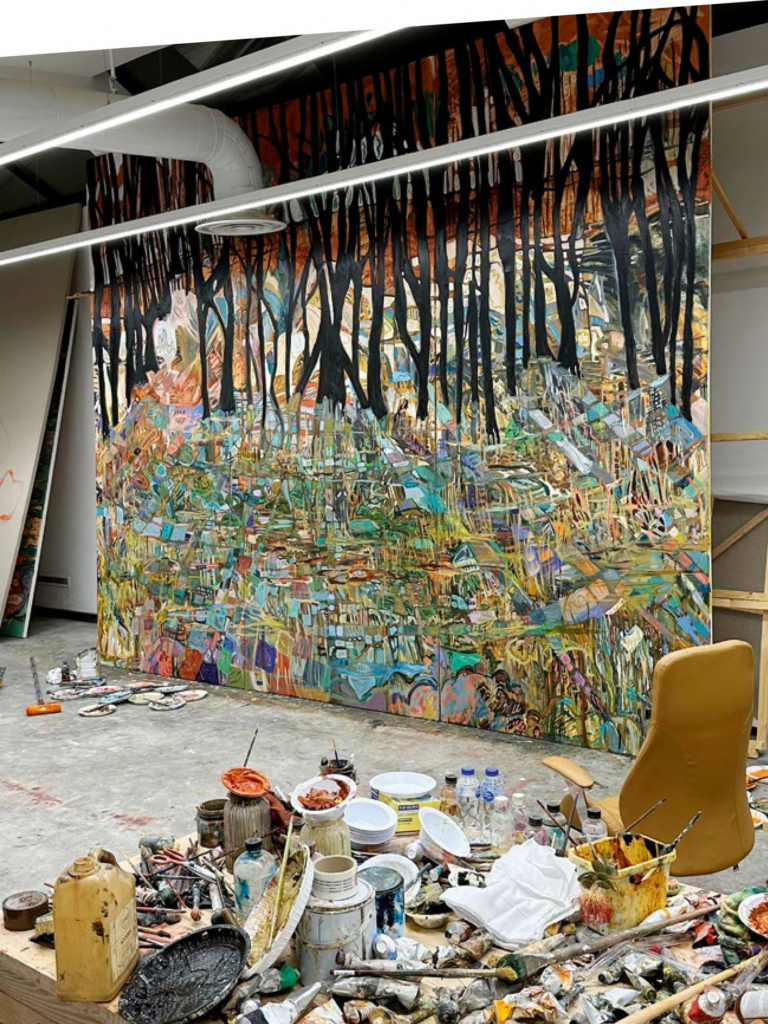ALIA AHMAD
Born 1996 in Riyadh, Saudi Arabia, where she lives and works
Alwasm
2023

Alia Ahmad is a painter who works with the color palettes of Riyadh’s urban and desert landscapes to explore how memory and place can be translated into a personal, visual language. Trained in digital culture at King’s College London, she recently graduated with a MFA from the Royal College of Art in London and has since gained international attention for her lush, large-scale canvases. Often context-specific, her work reflects the particularities of place, mirroring the tones and shapes of local flora and the land in compositions that build on vibrant color and networks of organic shape and line. The range of her palette extends from the temporalities of night and day, shifts of tone and light, and the slight transformations of color across the day. She considers her paintings “social spaces” or “blueprints,” suggesting an open-endedness in her process. She has recently shown at CICA, Vancouver (2023); 21,39 Jeddah Arts (2021); the RCA Research Biennale, London (2020); and the Design Museum, London (2020).
In her new work Alwasm (2023), commissioned for the Biennale, Ahmad finds inspiration in historic Wadi Hanifah located in the Najd region of Riyadh, creating a work that probes this specific terrain with its seasonal shifts and traditions. In the period between October and December, known as alwasm, relief sets in after the scorching and arid heat of summer. Temperatures drop, a cool breeze blows, and the land suddenly blossoms. People go out, and families take rugs to the waterside for a kashtah, an outdoor picnic or camp gathering, enjoying the patches of green that find their way through the sands after the extended warm season. Integrating elements of these scenes—textiles, books, photographs, and even road signs—the painting is a compositional collage of found motifs in warm tones that convey this seasonal bloom. Central to the painting with its gestural strokes and vibrant colors in the interplay of vertical treelike shadows and the composition of the ground are the geometric and linear patches that recall the technique of weaving. The work becomes a visual reading, exploration and celebration, of how nature and humans commune in the Wadi Hanifah. As Ahmad explains: “My intention is to illuminate that there is a lot of life from a land that is perceived as dry.”
